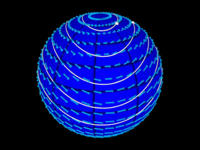
|
Cococubed.com
|
| Convective, Rotating Progenitors |
Home
Astronomy research
Software Infrastructure:
MESA
FLASH-X
STARLIB
MESA-Web
starkiller-astro
My instruments
Neutrino Emission:
Neutrinos from de-excitation
Neutrino emission from stars
Identifying the Pre-SN
Neutrino HR diagram
Pre-SN Beta Processes
Pre-SN neutrinos
White dwarf pulsations:
12C(α,γ) & overshooting
Probe of 12C(α,γ)16O
Impact of 22Ne
Impact of ν cooling
Variable white dwarfs
MC reaction rates
Micronovae
Novae
White dwarf supernova:
Stable nickel production
Remnant metallicities
Colliding white dwarfs
Merging white dwarfs
Ignition conditions
Metallicity effects
Central density effects
Detonation density
Tracer particle burning
Subsonic burning fronts
Supersonic fronts
W7 profiles
Massive stars:
Pop III with HST/JWST
Rotating progenitors
3D evolution to collapse
MC reaction rates
Pre-SN variations
Massive star supernova:
Yields of radionuclides
26Al & 60Fe
44Ti, 60Co & 56Ni
SN 1987A light curve
Constraints on Ni/Fe
An r-process
Effects of 12C +12C
Neutron Stars and Black Holes:
Black Hole spectrum
Mass Gap with LVK
Compact object IMF
He burn neutron stars
Stars:
Hypatia catalog
SAGB stars
Nugrid Yields I
He shell convection
BBFH at 40 years
γ-rays within 100 Mpc
Iron Pseudocarbynes
Pre-Solar Grains:
C-rich presolar grains
SiC Type U/C grains
Grains from massive stars
Placing the Sun
SiC Presolar grains
Chemical Evolution:
Radionuclides in 2020s
Zone models H to Zn
Mixing ejecta
Thermodynamics, Opacities & Networks
Radiative Opacity
Skye EOS
Helm EOS
Five EOSs
Equations of State
12C(α,γ)16O Rate
Proton-rich NSE
Reaction networks
Bayesian reaction rates
Verification Problems:
Validating an astro code
Su-Olson
Cog8
Mader
RMTV
Sedov
Noh
Software Instruments
2026 AAS Journals
AAS YouTube
Listing of 500+ Author Videos
AAS Peer Review Workshops
Outreach Material
Education Material
Other Stuff:
Bicycle Adventures
Illustrations
Presentations
Contact: F.X.Timmes
my one page vitae,
full vitae,
research statement, and
teaching statement.
In this article We explore the effects of rotation on convective carbon, oxygen, and silicon shell burning during the late stages of evolution in a 20 M$_{\odot}$ star. Using the Modules for Experiments in Stellar Astrophysics (MESA) we construct 1D stellar models both with no rotation and with an initial rigid rotation of 50% of critical. At different points during the evolution, we map the 1D models into 2D and follow the multidimensional evolution using the FLASH compressible hydrodynamics code for many convective turnover times until a quasi-steady state is reached. We characterize the strength and scale of convective motions via decomposition of the momentum density into vector spherical harmonics.
We find that rotation influences the total power in solenoidal modes, with a slightly larger impact for carbon and oxygen shell burning than for silicon shell burning. Including rotation in one-dimensional (1D) stellar evolution models alters the structure of the star in a manner that has a significant impact on the character of multidimensional convection. Adding modest amounts of rotation to a stellar model that ignores rotation during the evolutionary stage, however, has little impact on the character of resulting convection. Since the spatial scale and strength of convection present at the point of core collapse directly influence the supernova mechanism, our results suggest that rotation could play an important role in setting the stage for massive stellar explosions.

|
 |

velocity & 16O mass fraction |

velocity & 28Si mass fraction |

reduced VSH power spectra |

total VSH power |